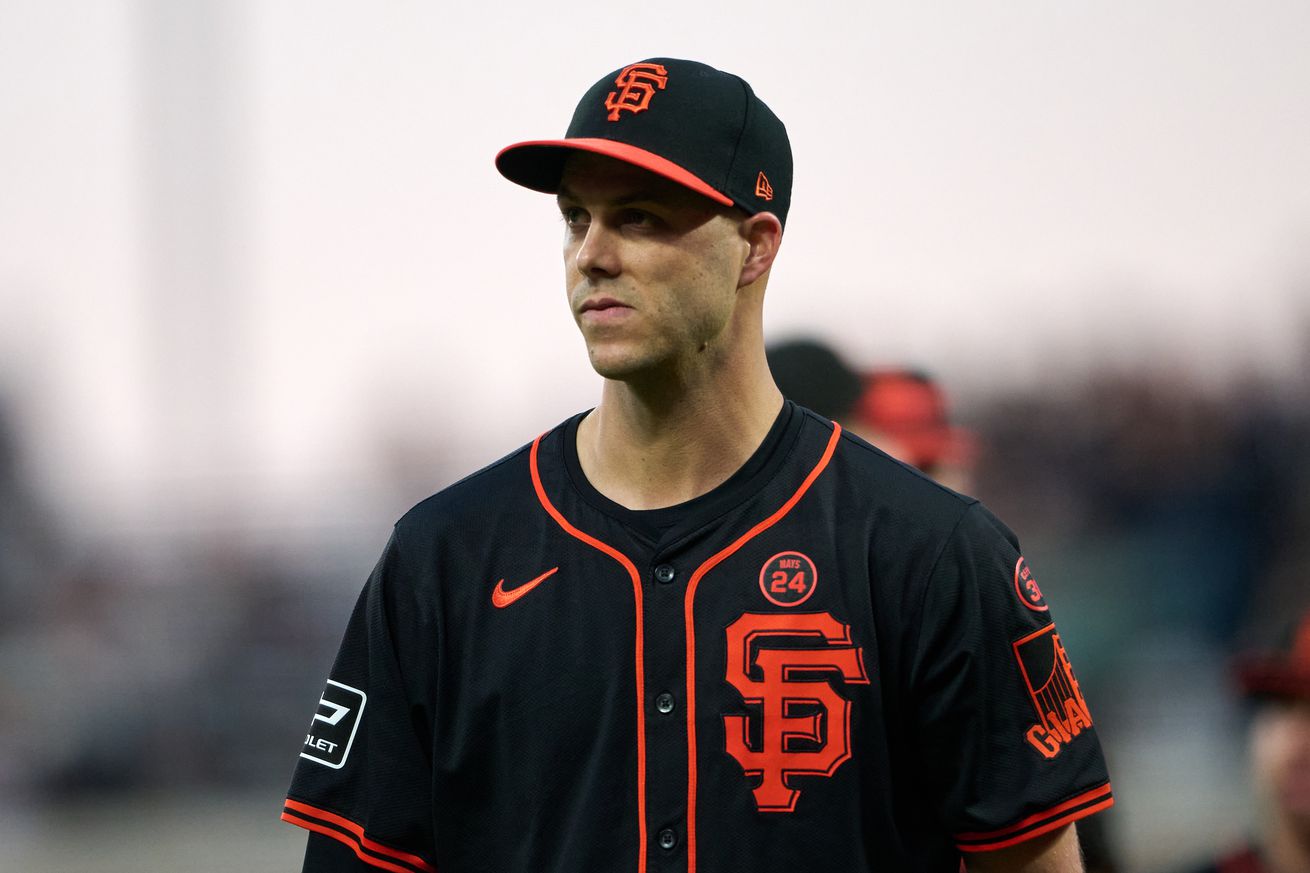
Good Twin/Bad Twin is a concept that belongs to fiction, but what the lefty reliever’s Giants career presupposes is, “What if it isn’t?”
2024 stats: 64 G, 60 IP, 1-4 W-L, 2.40 ERA (3.75 FIP), 9.6 K/9, 3.3 BB/9, 1.25 WHIP, 0.2 fWAR
Taylor Rogers was one of only 26 left-handed relievers to throw at least 60 innings in 2024. By that measure alone, one might be inclined to say that Rogers had a good season. His 2.40 ERA was better than his twin brother’s (2.48) and ranked 20th out of all relievers who pitched a minimum of 60 innings. By that measure, one might say he had a good season.
And yet… that simply wasn’t the case.
Instead, it was less a failure and more a disappointment. Not bad, just fungible. By FanGraphs’ wins above replacement, he was basically a replacement level pitcher. It was the second straight season where he pitched himself out of consideration as a crucial bullpen piece and so it’s the combination of his usage and his price tag ($12 million) that really underscored just how not good he’s been.
The money part of this is an unavoidable aspect of the discussion. He was paid closer money because 1) he’d been a successful closer before and 2) was penciled in as the backup closer should Camilo Doval struggle. Well, Camilo Doval struggled mightily this season, and Taylor Rogers was nowhere near the conversation as a replacement.
He saw high leverage situations just 11 times in his 64 appearances and, according to Baseball Reference, performed in the negative to the tune of -0.683 Win Probability Added. He recorded 0 saves, was charged with 3 extra innings losses and only pitched late (8th inning and beyond) when the team was behind. Over his final 3 months (July 5-September 29), he appeared in 28 games, pitched 25.2 innings, and sported a 2.81 ERA (though, with a 4.45 FIP). The Giants were 7-21 in his appearances. Taylor was never a serious option.
Back in August, the Giants placed him on waivers, hoping a team might bite and take on the rest of his money, but also exposing that the team has known for a while that the signing was, effectively, a bust. I wrote at the time:
It’s either a total whiff in evaluation from the outset or an implacable set of circumstances they’ve faced ever since they got him into the organization and could evaluate him with their own coaches and metrics.
For a guy who was signed to be a backup closer, he’s been far removed from that position, even as the Giants suffered an emergency there. Just 21 of his 54 appearances have come in the 8th inning or later. Last year, it was 32 of 60.
So, it’s not just a matter of lowering expectations, it’s about recognizing that the team is as close to giving up on a player as a team can get without actually cutting him. This is all because his fastball has simply stopped being fast. Here’s his average sinker velo of late:
2019: 94.8 mph
2020: 94.6 mph (-0.2)
2021: 95.7 mph (+1.1)
2022: 94.3 mph (-1.4)
2023: 93.6 mph (-0.7)
2024: 93.0 mph (-0.6)
Last year, Steven was able to point to his dominance against left-handed hitters as a lefty reliever:
He faced 103 lefties last season and only 9 of them recorded a hit. Of those 9 knocks, two went for extra bases (2 doubles). Their collective .124 slugging percentage and .101 batting average against was the lowest mark in the Majors, while their .206 on-base percentage was inflated to 6th lowest after issuing 11 walks and 1 HBP.
The instrument of torture? The sweeper.
This year, he had reverse platoon splits:
vs. RHB: .202/.268/.380
vs. LHB: .284/.365/.421
And it looks like that’s because of his sweeper’s ineffectiveness. MLB hitters had a .279 batting average against the pitch and slugged .477. This caused him to use it less than last year (47.2% usage rage compared to 56.5% in 2023), meaning hitters of either handedness got to see a 93 mph fastball more often. He is a walking red flag and it’s no wonder why they shied away from him and then tried to move on from him.
For those who want to discount the numbers (especially his FIP) and focus on outcomes — 60 innings isn’t nothing, that 2.40 ERA is shiny, he allowed only 7 home runs and struck out 64 — I can see how most of this post sounds pretty harsh. It almost seems silly to be highlighting the negatives when the player wasn’t bad. But if these reviews are anything, it’s to assess where they wound up by season’s end. Rogers didn’t land in the doghouse, but he fell out of favor and now he’s surrounded by a fog of regret.
With surplus value off the table, the San Francisco Giants, who’d probably hoped to get one last great season out of Rogers, must now cross their fingers that he’s no worse than he was in 2024. It has been a steady decline for him and so an offseason of rest and prep shouldn’t create an expectation — or even a hope — that he can bounce back and have one last good season in what will be the last year of his Giants contract. It’s not impossible, but after the last two seasons, it seems highly unlikely.